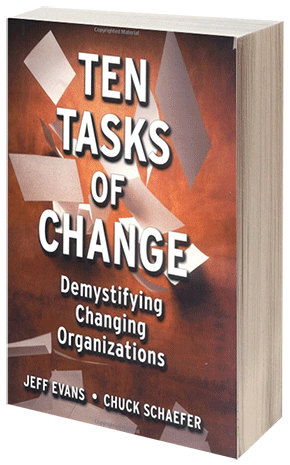Demystifying Changing Organizations
Are you ready to bridge the gap between theory and practice in guiding organization change?
The days of predictability and stability in organizations are gone. In today's world of rapid change, agility is a defining characteristic of successful, high-performance companies. In this environment, say Jeff Evans, PhD. and Chuck Schaefer, it is essential that the ability of an organization to work at change be institutionalized.
In Ten Tasks of Change, the authors offer a whole-systems approach to change as work, and present you with a model for dealing with rapid and intentional change in the twenty-first-century organization.
Bridging the gap between theory and practice Evans and Schaefer link their approach to the basic organizational capability of planning and managing work. They give you a logical framework for:
Thinking through the objectives of the work of change
Planning the activities to achieve those objectives
Using a selection of best-practices principles to accomplish them
and much more.
You will be provided with a directional framework for addressing change by looking at change as work–something that you do, rather than something that happens to you. By positioning their approach within the context of work, Evans and Schaefer allow organizations to utilize existing competencies of planning work and working plans.
The book is organized around the ten tasks of the framework, with each chapter corresponding to an individual task and outlining the work required in it. You'll see, for example, how to first appreciate the situation and identify the areas required to create a business case for change. You'll discover how to generate a leadership network through which local leaders can begin forming individual visions for the future-which will ultimately enable the larger organization's change. And the book explains how to formalize the system and process thinking into a design, complete the design, manage the transition, and maintain continuous process improvement through action learning.







